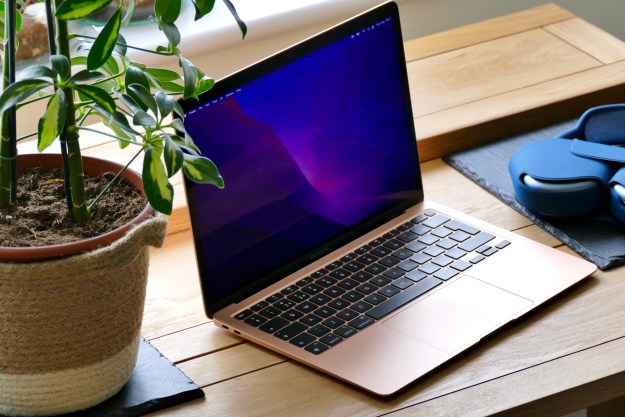
Samsung is fresh off the launch of new Windows 10 devices at its Galaxy Unpacked event, and the Galaxy Book Pro and the Galaxy Book Pro 360 are two very intriguing devices, to say the least.
They both bring vibrant AMOLED displays as well as Intel’s new 11th-generation processors to the table and seek to shake up the always-expanding market of Windows 10 devices.
However, aside from the natural 2-in-1 versus laptop comparisons, you might be wondering how the two compare to each other. That’s what we’re here for, and today, we’ll look at the two devices for you, peeking closer at their price, performance, design, and everything else that’s different between them.
Price

When it comes to buying a premium Windows device, price is always what comes first. In this area, the Galaxy Book Pro and Galaxy Book Pro 360 are neck and neck. Both are expensive ventures, though the Galaxy Book Pro is the cheaper option starting out.
Pricing on the Galaxy Book Pro, which is a clamshell laptop, starts at $1,000. That gets you an Intel Core i5 processor, 8GB of RAM, and a 256GB solid-state drive. The Galaxy Book Pro 360 2-in-1, meanwhile, starts at $1,200. On both devices, this pricing is the base 13-inch configuration. If you opt for the larger 15-inch versions or the more powerful Core i7 processor, the price will increase.
Being a 2-in-1, with a screen that can be flipped around, the Galaxy Book Pro 360 is naturally more expensive. It also includes an S Pen for inking. Just keep in mind that, unlike the Surface Pen or other Wacom styluses, the S Pen does not have Bluetooth onboard.
You also can switch up configurations as you see fit, adding in more RAM or storage to bump up the price accordingly. There are options for 5G on the Galaxy Book Pro 360, which is something you’ll be able to configure later this year. The Galaxy Book, meanwhile, comes with an LTE option.
Design

If you’re looking at the design, then this is where the Galaxy Book Pro and Galaxy Book Pro 360 really differ. As we hinted at the start, the Galaxy Book Pro is a clamshell Windows 10 laptop, whereas the Galaxy Book Pro 360 is a 2-in-1 convertible with a touchscreen and a 360-degree hinge.
If you don’t think touch is important and never find yourself tapping your screen with your fingers, then the Galaxy Book Pro is for you. If you really need a touchscreen device that you can also ink or draw on, or one where you can flip the screen around to watch movies, then the Galaxy Book 360 is what you’re looking for. The Galaxy Book Pro does not have a touchscreen.
Those differences aside, the Galaxy Book Pro and the Galaxy Book Pro 360 do share a bit of the same DNA. Both look and feel very premium despite being extremely thin and light. All the devices also come with unique color choices. “Mystic Navy” and “Mystic Bronze” are specific to the Galaxy Book Pro 360. “Mystic Blue” and “Mystic Silver,” meanwhile, are the color options for the Galaxy Book Pro.

Another design feature of note is the keyboard. If you want a full-size keyboard with a number pad, then you might want to pick up the 15-inch models of either device; the 13-inch models are a bit cramped for number crunching. Do note, though, that Samsung has tweaked the keyboard over last year’s Galaxy Book Ion and Flex. You’ll now find the fingerprint reader in the power button on the keyboard and that the right Alt key has returned. They all come with 1mm of key travel.
Finally, there is the display. Don’t let the larger 15-inch display option fool you. Across both models, the resolution is Full HD (1920 x 1080). The screens don’t have as many pixels as a Surface Laptop or a MacBook Pro, but they are quite vibrant. Samsung is using AMOLED on the Galaxy Book Pro and Super AMOLED (which adds touch) on the Galaxy Book Pro 360. These are some of the first 1080p 13-inch laptops to offer OLED screens.
This means more vibrant and lifelike colors, no matter what you’re doing. Oh, and a 720p webcam sits atop the display on all models. Samsung is not opting for 1080p, as some new laptop makers have begun to implement.
Both devices use a 16:9 aspect ratio screen, which mean they both have a thick bottom bezel.
Ports and connectivity
If you’re a person who doesn’t want to use dongles, then you might want to consider the Galaxy Book Pro over the Galaxy Book Pro 360. Here’s why.
The Galaxy Book Pro 360 features a Thunderbolt 4 port as well as two USB-C ports, a headphone jack, and a microSD card slot. The Galaxy Book Pro has a Thunderbolt 4 port, a USB-C port, a traditional USB-A 3.2 port, an HDMI port, a headphone jack, and a microSD card slot.
The addition of USB-A and HDMI on the Galaxy Book Pro removes the need to buy dongles for connecting flash drives, printers, and other peripherals. USB-C also means you can use any PD charger to charge these devices. (Samsung includes a fast charger in the box for you.)
There are also differences in terms of connectivity. The Galaxy Book Pro 360 has the upper hand, as it will support faster 5G cellular networks in configurations released later. Both laptops, however, include Wi-Fi 6E.
Portability and battery life

Portability across these devices comes down to size and battery life. They are both insanely portable devices, with the Galaxy Book Pro being the slightly smaller option.
The Galaxy Book Pro comes in at 0.44 inches thin on the 13-inch model and 0.47 inches on the 15-inch model. For the Galaxy Book Pro 360, the measurements come in at 0.45 inches and 0.49 inches, respectively.
Weight comes in at 1.9 pounds on the Book Pro 13-inch model and 2.3 pounds on the 15-inch model. As for the convertible, the 13-inch Book Pro 360 is a mere 2.3 pounds, and the 15-inch model is 3.1 pounds. This extreme portability is made possible by Samsung’s use of 6000-series aluminum alloy throughout the devices.

Samsung hasn’t said much about battery life, but it mentions that the devices have a 63 watt-hour battery. Last year’s Galaxy Book Flex and Galaxy Book Ion had 69.7Wh batteries, so the size has shrunk.
However, Intel’s 11th-generation CPUs do significantly improve battery life on laptops, so there’s hope you’ll get an all-day charge out of it.
Performance

Performance across both the Galaxy Book Pro and the Galaxy Book Pro 360 should shape up to be the same no matter which one you choose. We’ve seen a big boost in graphics and productivity performance thanks to Intel’s 11th-generation processors — which just so happen to power both of these devices.
Just note that if you opt for 15-inch models, you won’t be getting a dedicated graphics card. Intel Iris Xe graphics are standard across the new Samsung lineup. This means you should expect a boost for light gaming as well as video editing. Day-to-day productivity should also be great across both devices.
For the best performance, Samsung lets you configure both devices up to 32GB of RAM and up to 512GB of storage. This lets you get the best performance and the most space for your photos and videos. Of course, it comes at an increased price.
The choice is yours
Aside from the price, the primary difference between these two laptops is the design. The touchscreen and the 360-degree hinge make the Galaxy Book Pro 360 a more adaptable laptop, but the Galaxy Book Pro’s extra ports make it highly convenient.
Both devices will be available for sale starting on May 14.
$1,200 at Samsung
Editors' Recommendations
- Surface Pro 10: all the major changes rumored for the new model
- The 5 best MacBooks for video editing in 2024
- The best MacBook to buy in 2024
- Best laptop deals: Save on the Dell XPS 14, MacBook Pro 16 and more
- Best MacBook deals: Get an Air for $605 and save on M3 MacBook Pro


